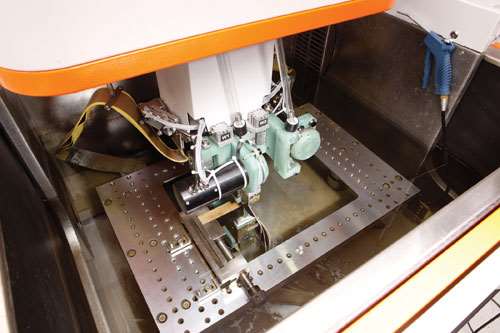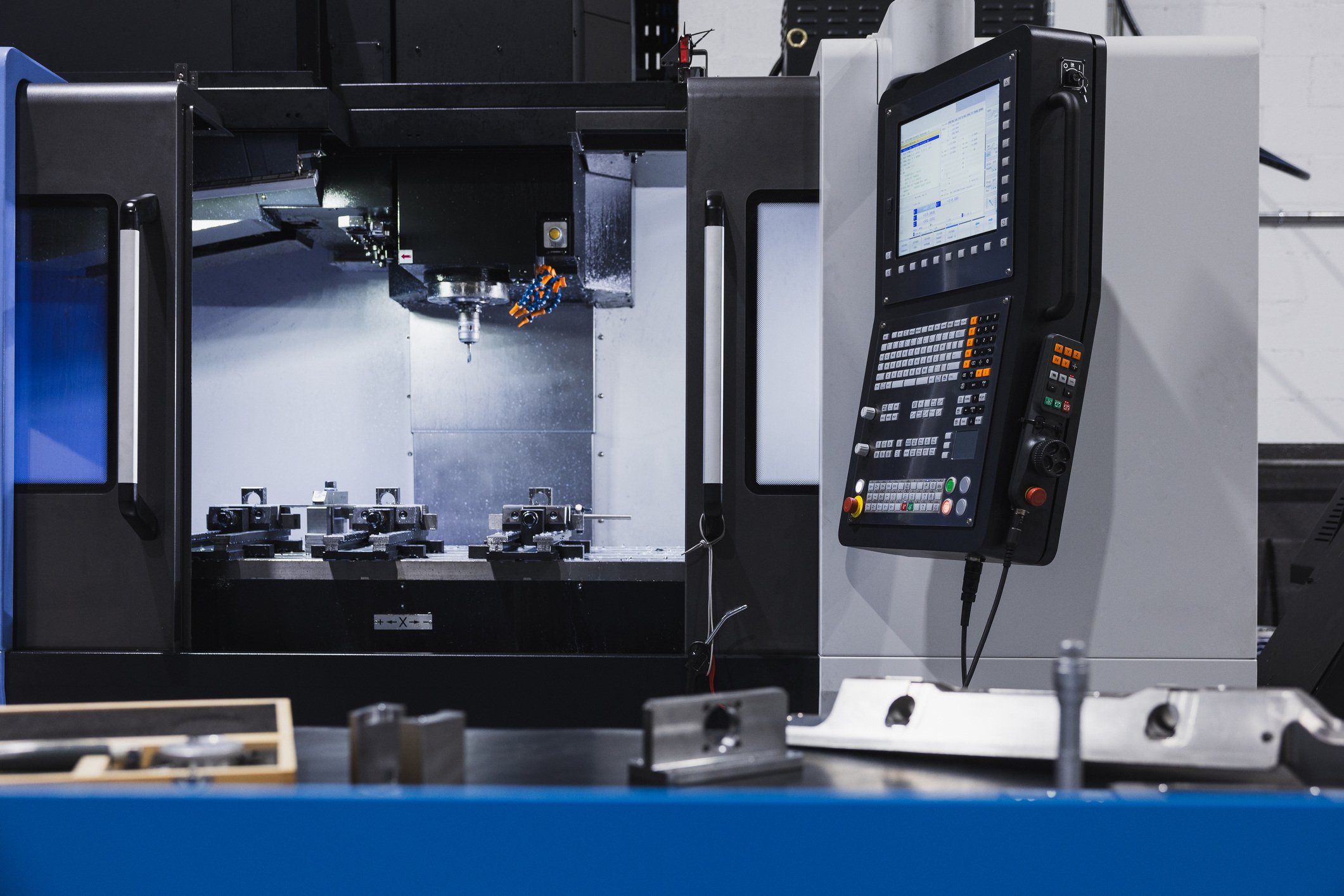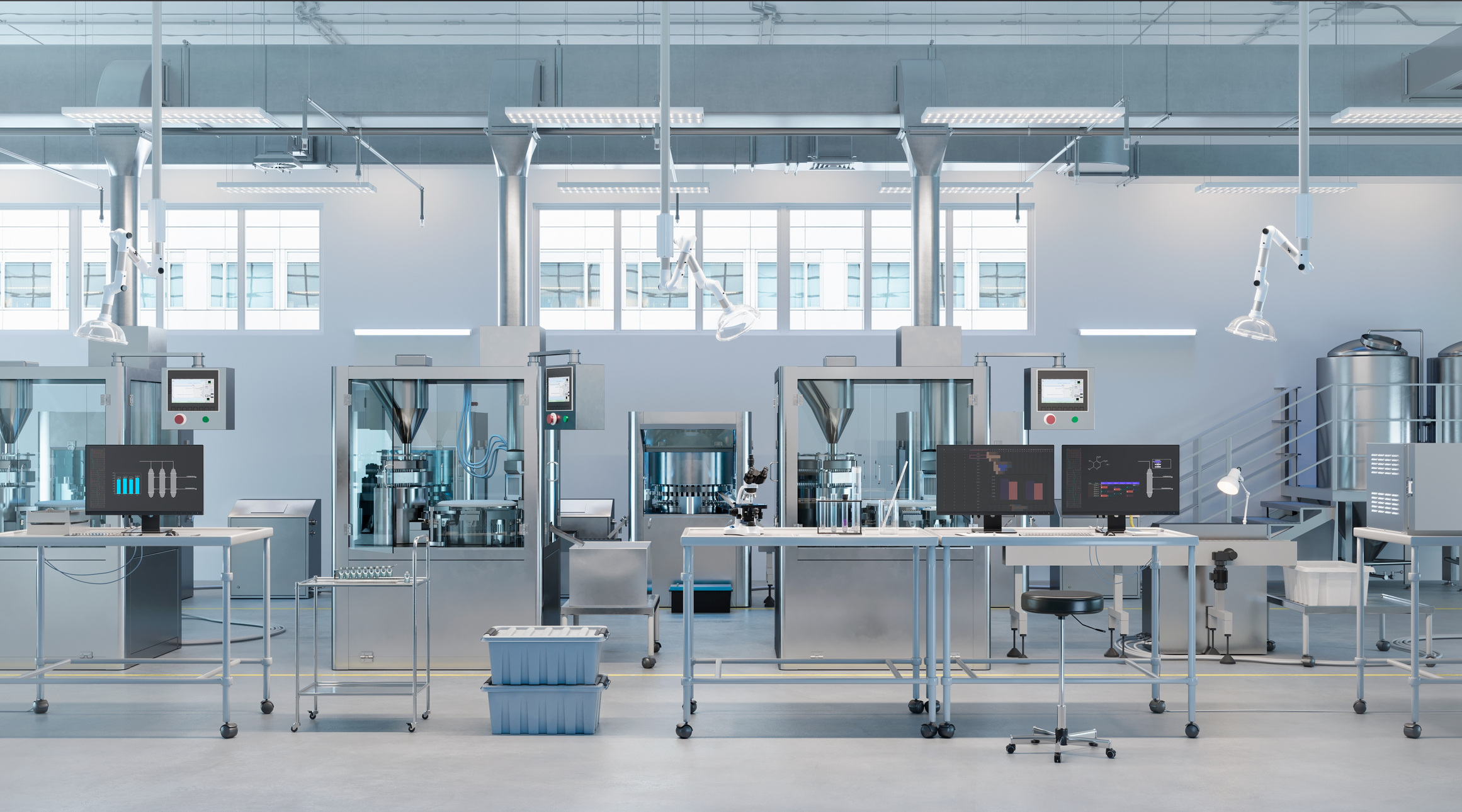EDM Metals: Choosing Materials for Electrical Discharge Machining

Modern electrical discharge machining (EDM) can manufacture some of the hardest materials imaginable. EDM uses electrical sparks to generate heat, precisely crafting components with extremely tight tolerances. This process is essential for creating critical components across various industries, including aerospace, automotive, and healthcare.
But before you can create parts with complex geometries, you must meet a number of requirements – one of the most important being that the material is compatible with EDM. To be compatible, the material must be conductive. If the part isn’t a conductive metal, EDM can’t be performed.
In this guide, we’ll dive deeper into which metals are suitable for EDM and which aren’t compatible. We’ll also discuss the factors that affect their conductivity and overall quality of the finished part.
Curious about more applications of EDM? Check out this article on EDM’s capabilities in medical parts manufacturing
What Materials Are Compatible in EDM Metal Machining?
EDM can be performed on any conductive material, but most of the time, EDM is for metals. This is because electrical sparks are required to remove material from the piece.
Different metals have different degrees of conductivity that – when combined with its other material properties – make it more or less ideal for EDM.
Since electrical discharge machining is a subtractive manufacturing process, material is removed to create the shape, rather than physical cutting. EDM is best for machining hard metals like stainless steel and titanium that would be impossible to machine using traditional methods.
What Factors Affect the Machinability of Compatible EDM Metals?
It’s clear that a metal must be conductive to perform EDM, but what other factors affect machinability? Below are some considerations:
- Electrical conductivity: Higher conductivity allows for faster spark generation and material removal, while lower conductivity leads to slower discharges and removal.
- Thermal conductivity: High thermal conductivity helps dissolve heat, preventing flaws and improving surface quality, while low thermal conductivity may lead to trapped heat near the spark, posing risk of cracking and recasting.
- Hardness: Extremely rigid materials have no impact on machinability because the erosion and material removal doesn't involve physical contact. However, harder materials can require slower, more precise cuts to avoid surface defects.
- Resistivity: This refers to how well a material can generate and sustain spark erosion between itself and the electrode. Highly conductive materials have low resistivity, resulting in better machinability and quality. Materials with low conductivity and high resistivity create unstable erosion and lower machinability.
- Melting point: With lower melting points, less energy is required to erode the material, making the rate of removal more efficient. Higher melting points require more energy to erode, leading to slower removal rates and potential for surface defects without proper controls in place.
- Material composition: The elements in the material will affect how it erodes and the quality of the finished product, such as alloys, composites, and binders in the workpiece.
- Flushing: This refers to how the removed particles are transferred between the workpiece and the electrode (dielectric fluid in RAM EDM or another electrode in wire EDM) throughout the process. Poor flushing can lead to surface defects, slow spark generation and removal rates, and poor precision.
Breaking Down EDM Metals
The machinability of EDM metals will vary depending on its conductivity – both electrical and thermal – and its hardness.
Below is a chart with some EDM metals compatible with this revolutionary machining method, their degree of conductivity, and their suitability for EDM:
|
Metal |
Electrical Conductivity |
Hardness |
Thermal Conductivity |
Overall EDM Machinability |
|
Steel |
Moderate |
Moderate to high |
Moderate |
Good |
|
Stainless Steel |
Moderate |
High |
Low |
Good |
|
Copper Alloys (brass) |
High |
Moderate to low |
Excellent |
Excellent |
|
Aluminum |
High |
Low |
High |
Good |
|
Titanium |
Low |
High |
Low |
Good |
|
Carbide |
Moderate |
Extremely high |
Low |
Good |
Steel
Steel is a common metal used in EDM. The material’s conductivity, hardness, thermal conductivity will vary depending on steel grade. But in general, steel is a good conductor of electricity, making it a good choice for EDM.
Stainless Steel
Stainless Steel is known for exceptional corrosion resistance and significant strength. It demands stronger, wear-resistant dies for stamping, suggesting it's a tough material suited for EDM's capabilities.
It has lower electrical and thermal conductivity than other metals like copper and brass, making the removal of material slower. However, its hardness makes it ideal for EDM tool and die applications.
Copper Alloys
Copper and most copper alloys have extremely high electrical and thermal conductivity. High electrical conductivity generates a high volume of discharge and fast material removal rates. High thermal conductivity reduces the risk of cracking and other damage. Beyond workpiece material, copper is a common electrode used in EDM.
Aluminum
Aluminum has high electrical and thermal conductivity, like copper, but its low melting point can increase the risk of flaws on the finished workpiece, such as cracks. It’s soft, making it easy to machine, but it requires much more control throughout the machining process to prevent flaws.
Titanium
Titanium is less conductive than most EDM metals, making material removal rates slower and lead times longer. Its high melting point also puts titanium parts at risk for damage like recasting or cracking on the surface.
It’s extremely hard, making it an acceptable metal for EDM, as spark erosion reduces the risk of tooling wear. Overall, it’s suitable for EDM; however, it also requires close monitoring and pulse control to avoid surface flaws or overheating.
Carbide
Carbides are one of the hardest conductive EDM materials. A carbide is a chemical compound composed of carbon and other elements, such as titanium or tungsten. As long as a carbide’s composition includes a conductive metal, it can be used for EDM. Its high melting point increases the risk of flaws without careful energy control and precise pulses.
Electrode Materials Used in EDM
For successful EDM, there must be an electrode that enables spark erosion to remove material from the workpiece. Two common electrode materials are tungsten copper and graphite.
- Copper tungsten: This alloy is often used as the electrode for carbide workpieces. Its high conductivity, low melting point, and durability make it ideal for RAM (sinker EDM).
- Graphite: This is the typical electrode material for steel applications of EDM. This is because graphite is electrically conductive and affordable.
Which Materials Are Incompatible With EDM?
Any nonconductive material is a no-go for EDM – whether it’s wire or Ram EDM. This means any plastic, wood, or ceramics aren’t compatible with EDM. This also includes composites made from nonconductive materials.
Considering EDM for Your Project?
The EDM process is best suited for electrically conductive metals with extreme hardness or softness. Its ability to produce precise parts with highly complex geometries – and without the potential of tooling wear – makes it a natural choice for metals like steel, stainless steel, and carbide. Consider the material properties your finished part needs before choosing a machining method like EDM.
Ready to learn more about how we perform EDM? Contact us today to discuss the details of your project, or explore our other machining methods that might work best for the material you’re working with.
You May Also Like
These Related Stories

EDM in Manufacturing: What It Is, How It Works & Applications

Machining Vs. Casting: Key Differences, Advantages, & Applications

%201.png?width=146&height=103&name=Slice%203%20(72)%201.png)

